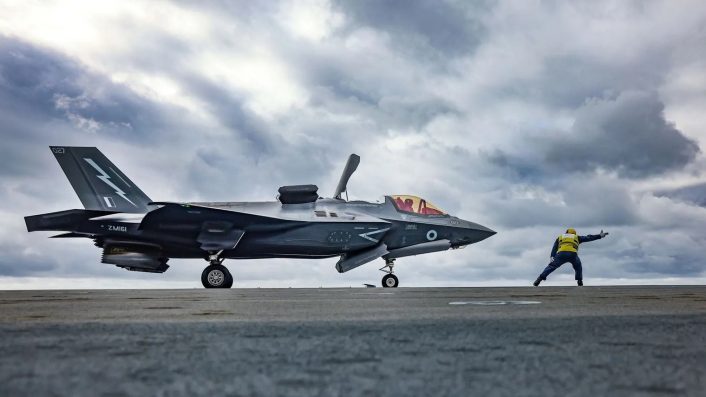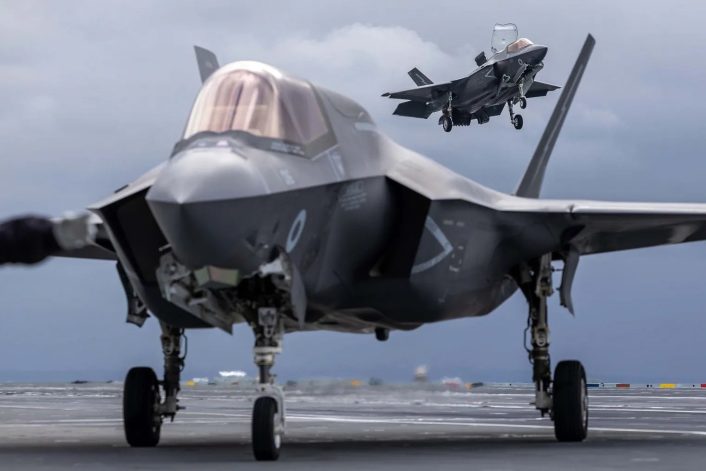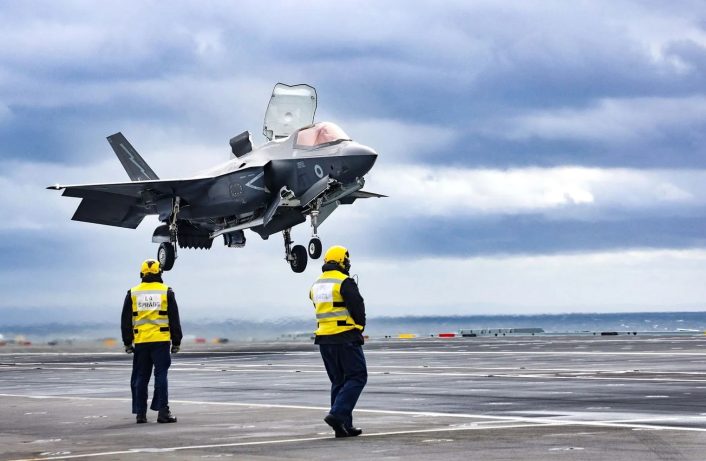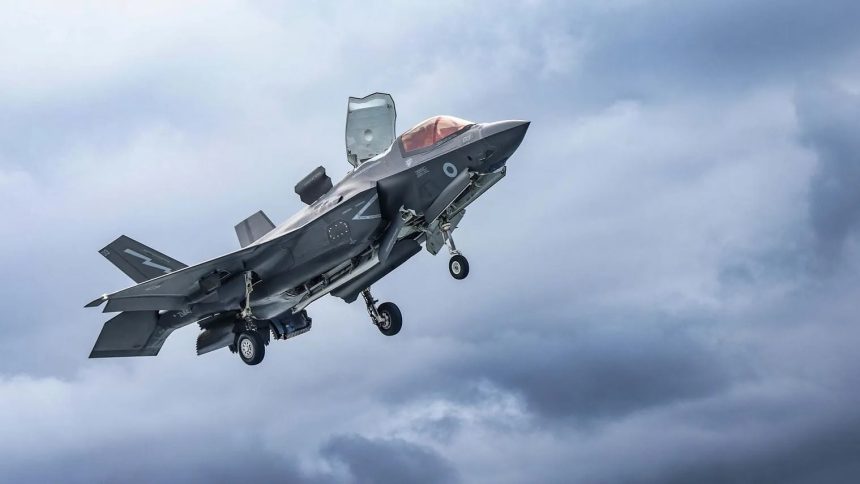The F-35Bs of 809 Naval Air Squadron have joined HMS Prince of Wales in the North Sea for a month of training as they prepare for the first deployment next year.
The Royal Navy is finally back at sea with its own fast jets after 15 years since the last aboard the HMS Ark Royal. Last week, the F-35Bs of the Navy’s 809 Naval Air Squadron, supported by their counterpart RAF 617 Squadron, have joined the HMS Prince of Wales aircraft carrier in the North Sea for a month of training.
During this period at sea, the personnel will work on the carrier qualifications as the squadron and the ship prepare to take part in an eight-month global deployment in 2025. 809 NAS only formed at the end of last year as the second of two UK front-line F-35B squadrons, and flew its first independent sorties in July 2024.
“This is a big moment for 809 Naval Air Squadron, a vital building block to working up with the carrier strike group in preparation for the deployment next year,” said Commander Nick Smith. “To be the commanding officer of a squadron with such a proud heritage is a huge privilege. We are still in our infancy forming as an F-35B squadron, so joining a carrier for the first time is truly a milestone.”
Phoenix rising, Lightning striking… :zap:
For the first time in nearly 15 years a Royal Navy fast jet squadron has embarked on a Royal Navy aircraft carrier.
F-35Bs of 809 NAS joined @HMSPWLS to prepare for Exercise #StrikeWarrior later this month. pic.twitter.com/KT5g9hpsQG
— Royal Navy (@RoyalNavy) October 1, 2024
While each UK F-35 squadron is marked either as a Royal Air Force or Royal Navy unit, it is important to note that all squadrons operate on a joint basis with serving personnel from both forces. In fact, as the Navy noted in the press release, 809 NAS draws its personnel roughly 50/50 from the RAF and Fleet Air Arm.
The joint environment in the squadrons is highly valued and the personnel from the two services got along without significant problems as they prepared for the first time at sea. The Navy noted that for three in every five personnel in 809 NAS this is their first time at sea.
“I’ve worked alongside the Navy for four years now and while there are slightly different skills and trades, at the end of the day, we’re all working to the same, high, professional standard,” said RAF Sergeant ‘Thorpy’ Thorpe. “There’s some good banter – and that’s absolutely a good sign that we get on. We go out of our way to call the carrier a ‘boat’ and ask where it’s ‘parked’ to wind up sailors – who always like to remind us that they are the ‘senior service’.”

809 Naval Air Squadron
809 Naval Air Squadron (NAS) is the United Kingdom’s second frontline unit operating the F-35B Lightning II multirole stealth fighter. It is the first UK F-35B squadron commissioned so far to be badged as a unit of the Royal Navy’s Fleet Air Arm, although all UK F-35B squadrons will operate with a mix of Royal Air Force and Fleet Air Arm personnel.
The shared approach to operating these aircraft is derived from the Joint Force Harrier concept initiated by the British military in the early 2000s, which unified the Harrier squadrons of the Royal Air Force and the Royal Navy into a single command structure. This development was the culmination of years of increasing coordination between the two forces, dating back to the 1982 Falklands War.
809 Naval Air Squadron has been reactivated as the United Kingdom’s second frontline F-35B Lightning squadron on Dec. 8, 2023, almost 41 years after it was decommissioned. Of the more than 100 historic Fleet Air Arm units whose numbers are currently dormant, 809 was selected more than a decade ago as a F-35 Lightning formation, largely due to its illustrious history as a strike and attack squadron having received battle honours from operations in the Arctic, Mediterranean, Burma, Suez and South Atlantic over a 41-year period.
For the ceremony, an F-35B, ZM151, was applied the modex 809 and a tail art with the phoenix rising from the flames, the 809 NAS’ emblem. The latter, however, was only temporarily applied as the aircraft will not fly routinely with squadron markings. In fact, the fleet is pooled between squadrons at RAF Marham and all jets carry a lightning flash tail insignia.

Preparation for CSG25
HMS Prince of Wales and 809 NAS will continue to build experience head of the planned Carrier Strike Group 2025 deployment, which will see the carrier travel to the Pacific region with an expected embarked air wing of twenty four F-35Bs. HMS Prince of Wales spent the summer ensuring she’s ready to deploy, said the Royal Navy.
In late August, the carrier sailed to conduct Operational Sea Training, achieving assurance the ship is ready to handle any state 3 (peacetime) emergency from fires to floods. The HMS Prince of Wales will now take part in Exercise Strike Warrior and, once completed, the aircraft and Carrier Strike Group staff will disembark while carrier undergoes a final support period in Portsmouth before the deployment.
Full details about the CSG25 deployment have not yet been released, however the U.K. government has already announced that the CSG will visit India and Japan for joint training. “In an increasingly volatile world where we can no longer take peace for granted, it’s critical to stand united with our allies and partners in defence of democracy and freedom,” said the former Secretary of State for Defence Grant Shapps.
Norway will also be part of the deployment, with two vessels, including a frigate, joining the CSG. “As a close strategic partner, we are delighted to have the Norwegian Navy join the Royal Navy on this historic deployment. It’s an exciting demonstration of the strength of our nations’ maritime partnership and the deepening of our relationship in the months and years to come,” said current Defence Secretary John Healey.










